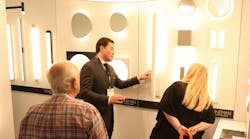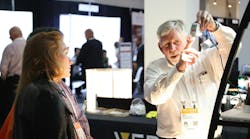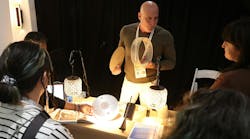A new U.S. Department of Energy (DOE) report published on Oct. 23 reveals that its Integrated Lighting Campaign (ILC) participants saved more than 2 million kilowatt hours (kWh) through the adoption of advanced lighting systems.
The results of the campaign are covered in DOE's 2023 Better Building Initiative Progress Report, which summarizes the achievements of public and private sector partners in DOE's Better Building Initiative. The ILC is one aspect of the initiative, which has the overall goal of improving energy efficiency in the commercial, industrial, and residential sectors and bolstering cost-effective decarbonization solutions.
The ILC was launched during the Better Buildings Summit of 2020 and is the successor of the Interior Lighting Campaign (2015-2019), a program that assisted facility owners and managers in achieving savings opportunities from high-efficiency interior lighting solutions. ILC participants receive resources and assistance aimed at identifying ways to integrate lighting with other building systems and to overcome implementation roadblocks.
Other ILC goals include developing and sharing resources for integrating lighting systems, promoting the use of advanced lighting controls and sensors, and encouraging the integration of lighting with other building systems. The ILC provides facility managers and owners guidance on choosing, deploying, integrating, and managing lighting systems and recognizes lighting projects that display innovation and exemplary performance.
The ILC is one of the Better Building Initiative’s technology campaigns, along with the Building Envelope campaign, which aims to improve building envelope performance in new and existing buildings; the Smarter Small Buildings campaign, which assists in the integration of rooftop HVAC units; and the Internet of Things (IoT)-Upgradable Lighting Challenge, which facilitates the widespread adoption of IoT-upgradable lighting through the recognition of end users and manufacturers.
Beyond lighting, the DOE report revealed that, since the program’s inception in 2011, efficiency improvements implemented by Better Buildings Initiative partners have saved $18.5 billion and have cut carbon dioxide emissions by 190 million metric tons.





